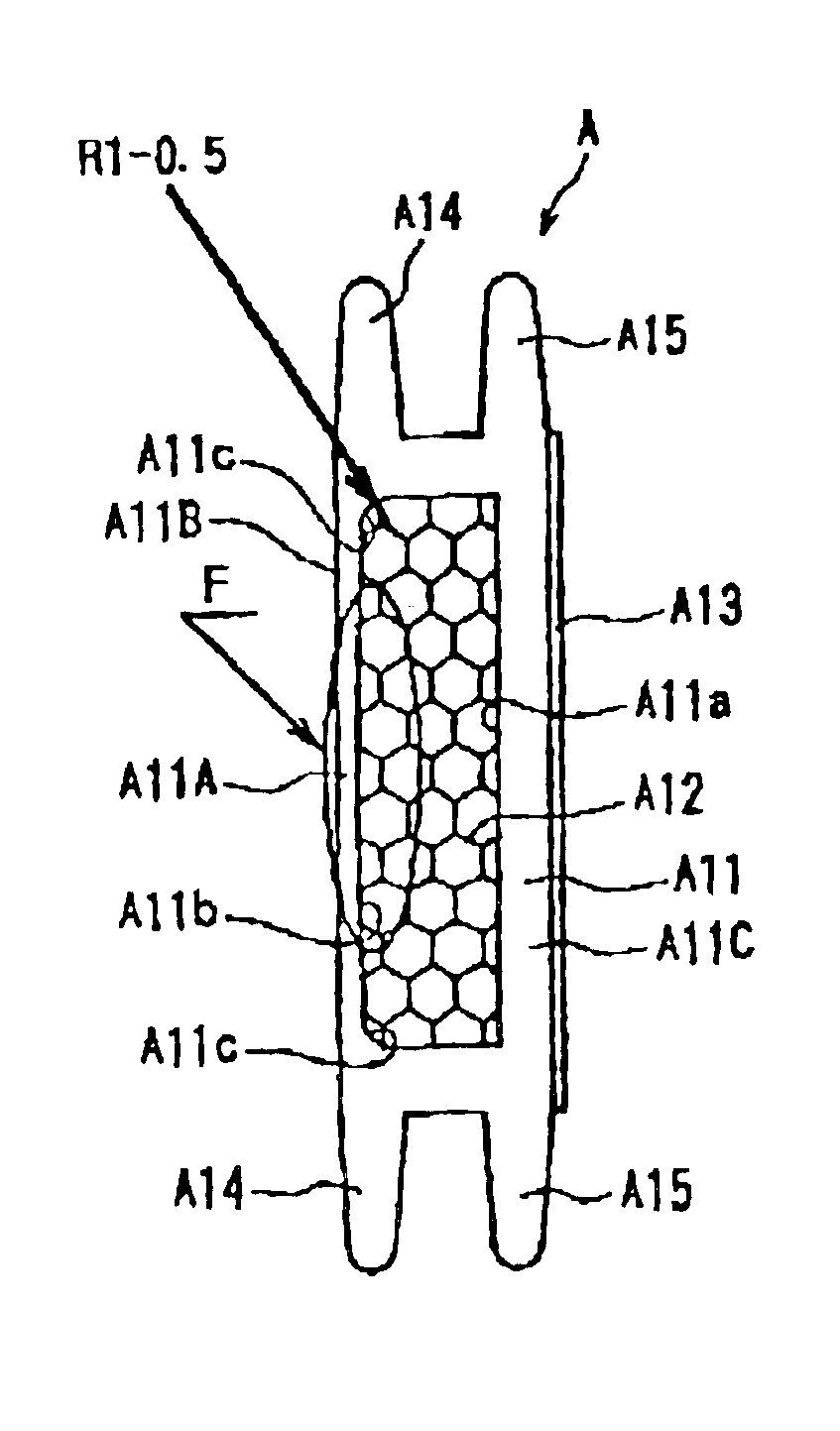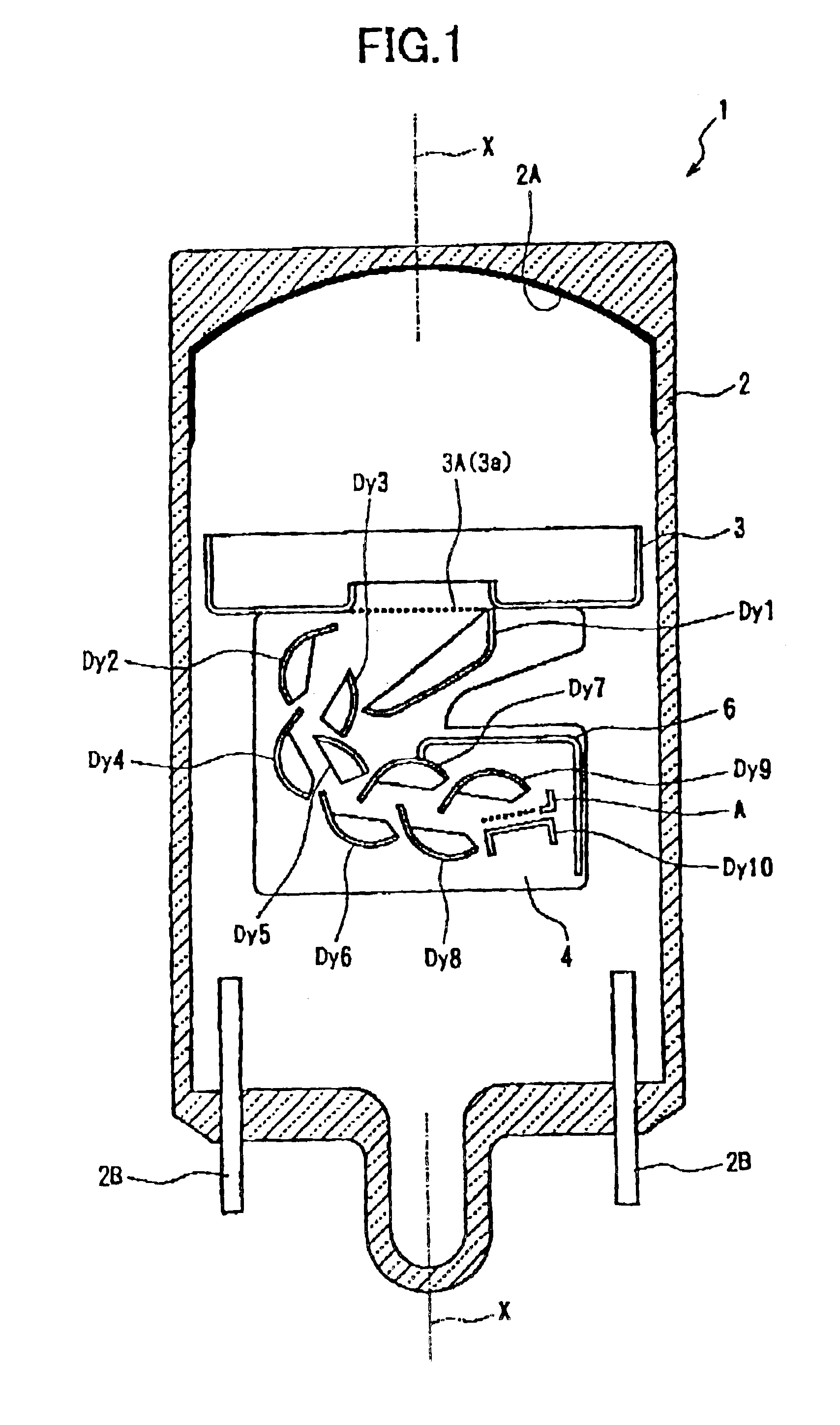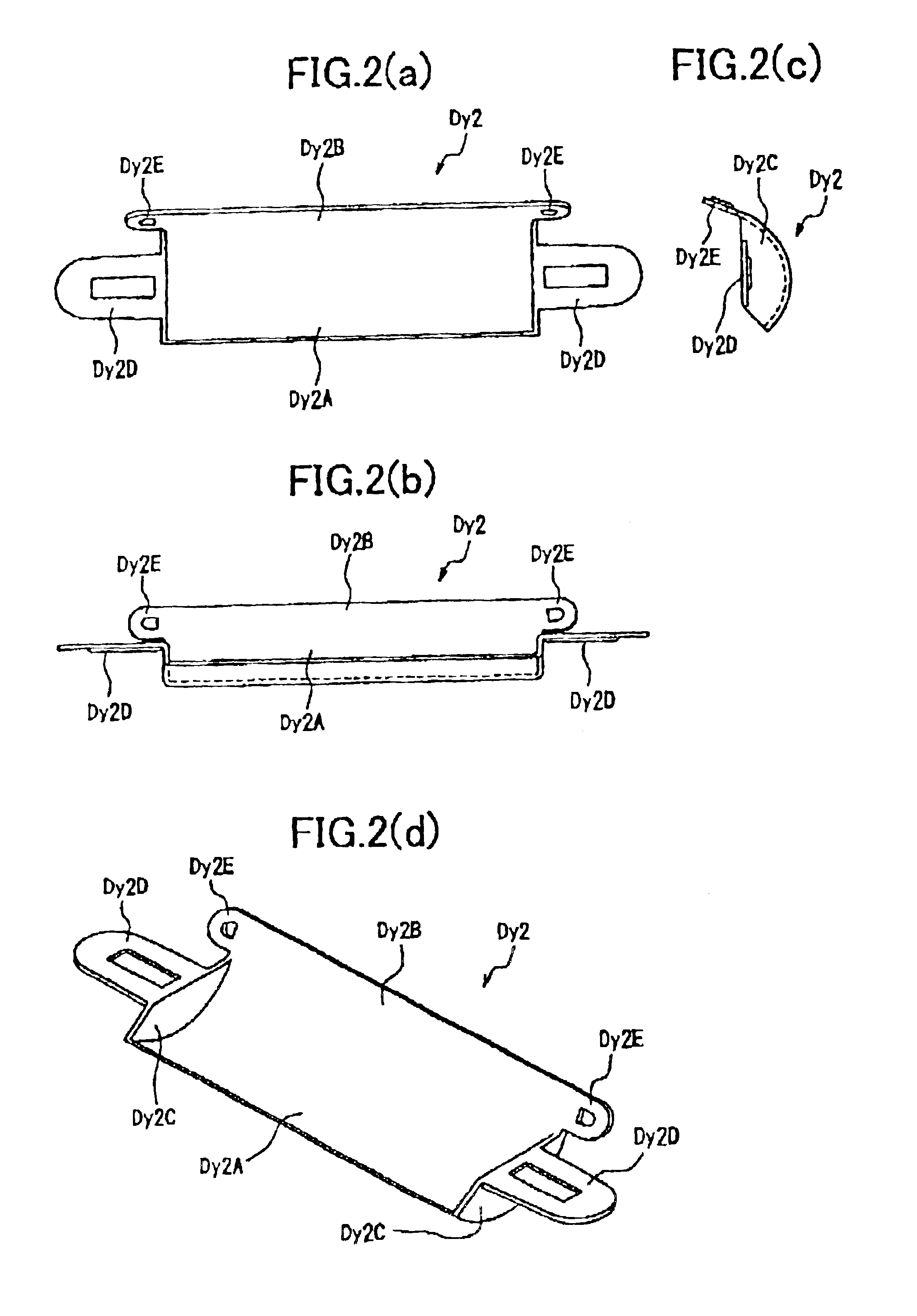Photomultiplier tube
a technology of multi-layer tubes and tubes, applied in the field of photomulti-layer tubes, to achieve the effect of increasing the vibration resistance of the other long sid
- Summary
- Abstract
- Description
- Claims
- Application Information
AI Technical Summary
Benefits of technology
Problems solved by technology
Method used
Image
Examples
Embodiment Construction
A photomultiplier tube according to a first embodiment of the present invention will be described while referring to FIGS. 1-6. A photomultiplier tube 1 according to the first embodiment includes a tube-shaped vacuum vessel 2 having a tube axis X. FIG. 1 is a cross-sectional view of the photomultiplier tube 1 cut along the tube axis X. The tube-shaped vacuum vessel 2 is formed of Kovar glass or a like material.
Both ends of the tube-shaped vacuum vessel 2 along the tube axis X are closed. One end has a planar shape. A photocathode 2A is formed on the inner surface of this planar end for emitting electrons in response to incident light. The photocathode 2A is formed by reacting an alkali metal vapor with antimony that has been pre-deposited on the inner surface of the end. A plurality of lead pins 2B are provided on the other end of the tube-shaped vacuum vessel 2 for applying prescribed potentials to dynodes Dy1-Dy10 and an anode A. FIG. 1 shows only two of the lead pins 2B for conve...
PUM
 Login to View More
Login to View More Abstract
Description
Claims
Application Information
 Login to View More
Login to View More - R&D
- Intellectual Property
- Life Sciences
- Materials
- Tech Scout
- Unparalleled Data Quality
- Higher Quality Content
- 60% Fewer Hallucinations
Browse by: Latest US Patents, China's latest patents, Technical Efficacy Thesaurus, Application Domain, Technology Topic, Popular Technical Reports.
© 2025 PatSnap. All rights reserved.Legal|Privacy policy|Modern Slavery Act Transparency Statement|Sitemap|About US| Contact US: help@patsnap.com



